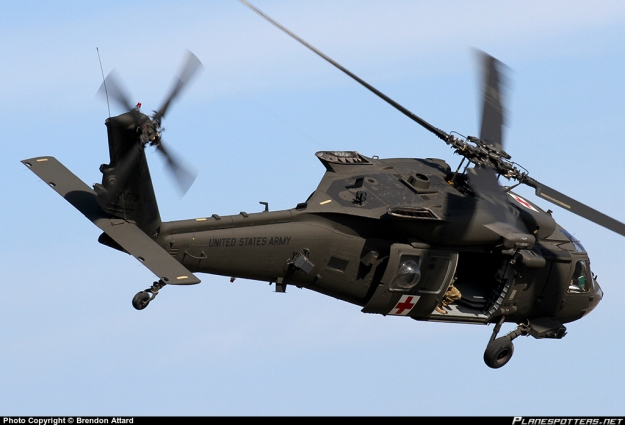Flight Ready: Guaranteeing Optimum Problem for Your UH 60 Helicopter
Flight Ready: Guaranteeing Optimum Problem for Your UH 60 Helicopter
Blog Article
Recognizing the Mechanics and Engineering Behind Uh 60 Helicopters
The UH-60 helicopter, typically called the Black Hawk, stands as a peak of modern-day rotorcraft modern technology, symbolizing a mix of durable design and elaborate mechanics. From its creation to its existing models, the development of this airplane showcases a blend of technology and practicality. As we peel back the layers of the UH-60's style, a world of complex systems and careful design comes to light. Recognizing the technicians and engineering behind this flexible airplane unveils a realm where precision meets power, and where each element plays an essential duty in achieving trip.
History of UH-60 Helicopters
The background of UH-60 helicopters traces back to the late 1970s when the USA Army looked for a sophisticated and flexible utility helicopter to change its aging fleet. In response to this requirement, the Sikorsky Airplane Firm developed the UH-60 Black Hawk helicopter. Introduced in 1979, the UH-60 promptly became a staple in military procedures because of its excellent abilities.
The UH-60 was designed to master a range of missions, including troop transportation, clinical evacuation, electronic war, and unique operations. Its capacity to adjust to different roles made it a beneficial property to the U.S. uh 60. Military and various other military pressures around the globe
Over the years, the UH-60 platform has actually undertaken numerous upgrades and variations to enhance its efficiency and maintain speed with developing mission requirements. These helicopters have actually seen extensive service in problems such as the Gulf War, Afghanistan, and Iraq, showcasing their integrity and versatility in varied operational settings. The UH-60's rich history is a testament to its long-lasting legacy as a premier utility helicopter.

Engine and Power Systems
Using sophisticated propulsion modern technology, UH-60 helicopters are geared up with innovative engine and power systems to make certain optimal efficiency and integrity in a series of operational circumstances. The UH-60, generally recognized as the Black Hawk, is powered by 2 General Electric T700-GE-701D engines, each qualified of providing up to 1,940 shaft horse power. These turboshaft engines provide the needed drive for the helicopter to accomplish its objectives properly, including army transportation, medical emptying, and battle support.

Blades System and The Rules Of Aerodynamics
Just how do the blades system and aerodynamics of UH-60 helicopters contribute to their functional performance and trip capacities? The blades system of the UH-60 helicopter plays a crucial duty in supplying lift and propulsion. The UH-60 features a four-bladed, fully expressed blades system that enables for high maneuverability and stability during flight. This layout makes it possible for the helicopter to carry out a large array of missions, from transport and medical emptying to fight procedures.
The rules of aerodynamics also play a vital function in the performance of UH-60 helicopters. The streamlined fuselage and blades blade layout lower drag, allowing the helicopter to achieve greater rates and much better gas efficiency. The aerodynamic design of the UH-60 additionally adds to its capability to operate in diverse environmental problems, consisting of high elevations and warm temperatures.
Avionics and Flight Control Solution

In its complex sychronisation with the rotor system and the rules of aerodynamics of UH-60 helicopters, the avionics and flight control systems develop a vital network of modern technologies shaping the airplane's functional capabilities. In the UH-60, these systems include digital displays, interaction radios, GPS navigation, weather radar, and autopilot systems.
The trip control systems of the UH-60 are in charge of translating the pilot's inputs right discover here into the proper changes to the blades system, guaranteeing stable flight and maneuverability. These systems consist of hydraulic actuators, servos, and computer systems that interact to regulate the tail and primary rotors, as well as other trip control surface areas. By specifically managing the helicopter's trip dynamics, these systems allow pilots to do a vast variety of missions, from transportation and search-and-rescue to deal with procedures, with accuracy and self-confidence.
Function and Applications in Aeronautics
Avionics systems in UH-60 helicopters include a variety of digital systems that aid in navigating, interaction, monitoring, and managing numerous aircraft features. These systems consist of digital screens, autopilot systems, interaction radios, GPS navigating equipment, and climate radar. In addition, these systems integrate security attributes such as autopilot modes, surface recognition warning systems, and security enhancement systems to enhance the overall safety and security and operational capabilities of the UH-60 helicopters in various objectives, consisting of army transport, clinical evacuation, search and rescue, and aerial firefighting.
Final Thought
In verdict, the UH-60 helicopter is a flexible aircraft with an abundant background and progressed design. Its engine and power systems, rotor system, the rules of aerodynamics, avionics, and flight control systems all work with each other to make it a reliable and effective maker.
In its elaborate sychronisation with the blades system and aerodynamics of UH-60 helicopters, the avionics top article and flight control systems develop an important network of modern technologies forming the aircraft's functional capacities.The flight control systems of the UH-60 are responsible for translating the pilot's inputs into the ideal adjustments to the rotor system, guaranteeing secure flight and ability to move. Avionics systems in UH-60 helicopters include an array of digital systems that help in navigating, interaction, tracking, and controlling different airplane functions. Additionally, these systems include safety and security features such as autopilot settings, surface understanding cautioning systems, and security augmentation Get More Information systems to enhance the total security and functional capacities of the UH-60 helicopters in numerous goals, consisting of troop transport, medical discharge, search and rescue, and aerial firefighting.
Its engine and power systems, rotor system, the rules of aerodynamics, avionics, and trip control systems all function with each other to make it a effective and reputable machine.
Report this page